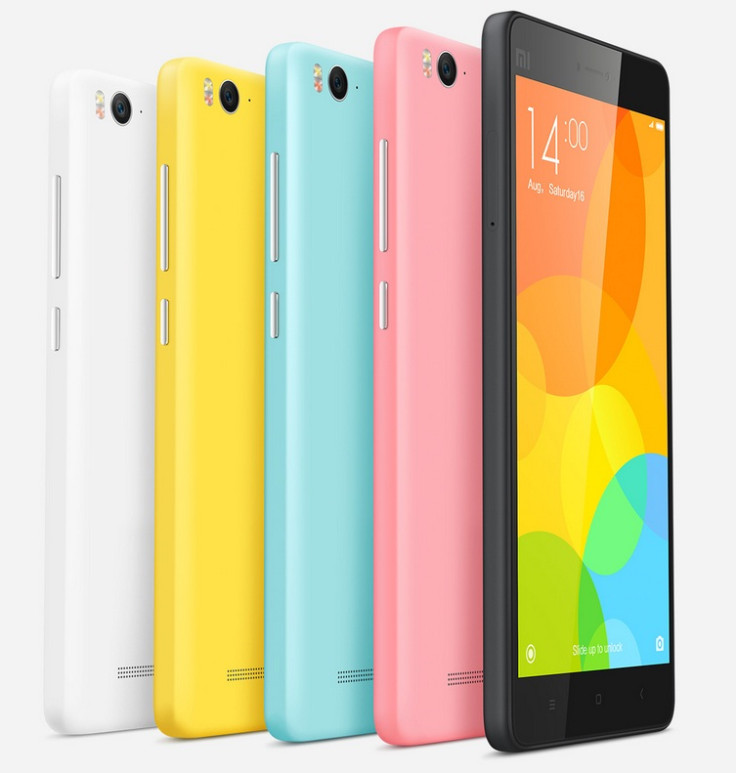Xiaomi Redmi Note 2 vs Xiaomi Mi 4i: How the budget Xiaomi flagships compare

China's Xiaomi recently launched the Redmi Note 2 that is aimed at the budget conscious smartphone buyers, especially in emerging economies. The smartphone, touted as a budget flagship model, faces stiff competition from other already existing but relatively newer devices. Notable among these is Xiaomi's own global Mi 4i launched in 2015.

Both the Redmi Note 2 and the Mi 4i fall into the category of value-for-money devices offering buyers decent technical specs. Here is a technical comparison of the handsets.
Display
Xiaomi's Redmi note 2 features a comparatively large 5.5in full HD 1080x1920 display, along with 401 pixels per inch (ppi) density. On the other hand, the Xiaomi Mi 4i incorporates a smaller 5in display with resolutions of 1080 x 1920 pixels and pixel density of nearly 441 ppi. Both the smartphones support Multitouch and 16M colours.
It is evident that the quality of images on the Mi 4i's screen will be sharper by virtue of the handset's 441 ppi in comparison to the Redmi Note's 401 ppi pixel density.
Hardware
The Xiaomi Redmi Note 2 is driven by two octa-core Cortex-A53 CPUs clocked at 2.0GHz and 2.2GHz respectively and enclosed within a MediaTek MT6795 SoC with 2GB RAM on board.
In contrast, the Xiaomi Mi 4i has on board a 1.7GHZ quad-core Cortex A53 and 1.1 GHz Cortex A53 CPUs over a Qualcomm MSM8939 Qualcomm Snapdragon 615 SoC. The smartphone features 2GB RAM inside the hood.
Both the Xiaomi Redmi Note 2 and Mi 4i should offer virtually the same degree of computing and instruction processing capability. However, the Mi 4i could have a slight edge with its Snapdragon 615 SoC
Memory
The Redmi Note 2 is classified on its internal storage that consists of 16GB and 32GB variants each featuring 2GB RAM. The 16GB edition is driven by a 2GHz CPU, while the 32GB edition features a 2.2 GHz processor. However, only the Chinese variant of Xiaomi's Redmi Note 2 features a MicroSD card slot for expansion of internal storage (16GB by default in this version) expandable up to 32GB.
The Xiaomi Mi 4i features 2GB RAM on board; and this in combination with either of the quad-core SoCs of the smartphone, should allow users to utilise it for a comparatively decent degree of high-end gaming. The smartphone offers only 16GB of internal storage by default and there is no option to insert an external MicroSD card.
Camera
Both the Xiaomi's Redmi Note 2 and the Mi 4i feature an identical 13MP rear camera. But the Mi 4i features a dual-LED flash, in comparison to the Redmi Note 2's single LED-flash. For video capture, the new Redmi Note and the Mi 4i offer identical specs of 1080p@30fps. The smartphones also have a 5MP rear camera.
Battery
The Xiaomi Redmi Note 2 is powered by a 3,060 mAh Lithium-Polymer battery that is claimed to offer a talktime of up to 11 hours and 30 minutes on 3G. The Xiaomi Mi 4i is driven by a fixed 3120 mAh Li-Ion battery which is claimed to offer a talktime of 35 hours on a 3G network.
Software
Despite being a recent release, the Xiaomi Redmi Note 2 runs on the older Android 5.0 (Lollipop) operating platform out of the box, with the more recent MIUI 7 user interface on top. On the other hand, the Mi 4i runs on Android 5.0.2 (Lollipop) albeit with the older MIUI 6 on top. For connectivity, users of both smartphones get LTE, HSPA, Bluetooth 4.1, Wi-Fi 2.0 and microUSB.
Release date and price
The Redmi Note 2 is currently available for purchase only in China (via online flash sales) for CN¥799 (£79, $125, INR 8,136). The handset can also be ordered internationally via third-party e-tailer GearBest which has put a price tag of $169 (£110) on the handset.
In contrast, the Xiaomi Mi 4i which is branded as a global smartphone, can be purchased officially in many countries for $234 (£160). In India, the device costs Rs 13,000 (£128).
© Copyright IBTimes 2024. All rights reserved.






